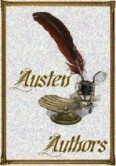Jennifer Becton's Blog, page 53
July 26, 2011
Numbers: July
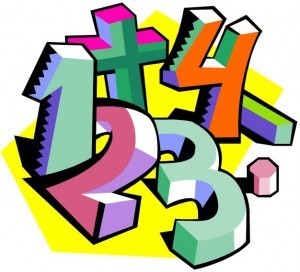
Warning: Math Ahead
If there's one thing I've learned in my time as an indie publisher, it's that some people love hearing numbers, and other people become upset by them. I'm not bragging or complaining about sales or profits here; I'm providing data so others can choose how they want to price their books. If you do not care for this type of post, avert your eyes now.
Charlotte Collins Sale: Inconclusive
In mid-June, I put Charlotte Collins on a limited-time sale at $0.99. This was supposed to last only 30 days, but due to some technical glitches, it ran longer. This happened to correspond exactly with a major overall slowdown of all ebook sales. According to my sources, things dropped for everyone by about 15 percent. This means I can't accurately compare the May and June numbers. I'll need to compare my June and July numbers to tell you for sure if it was worth it.
My gut says that the numbers are not going to work out. In order to make as much money, I have to sell six times more books at $.99 as I do at $2.99. I don't think that'll happen, and I'm guessing that's because Charlotte is in a niche market of a niche market. However, I don't regret the sale because it kept me on the Regency Romance Top 100 list during the sales slowdown, giving me more exposure to readers.
Absolute Liability Launch: Success
I decided to use an aggressive launch strategy with Absolute Liability by combining a low introductory price ($0.99) with 4 major marketing pushes. My goal was bulk sales to help break the book into the competitive thriller genre and get it to show up on some genre bestsellers lists if possible. This was a huge success. The book topped out at 430 on the Kindle bestsellers list and has stayed strong on three genre lists. Since its launch, it has sold almost 1,400 copies. Insane!
How does this translate to income? Right now I'm averaging 100 sales per day at $.99, which translates to about $35 in income. To earn the same amount, I'd have to sell only 17 books at $2.99. Shocking difference.
I don't regret the $.99 price at all. It provides visibility on Amazon, which is basically free advertising, and one of my goals with the book is to hook readers on my series. I want them to love my characters as much as I do, and to fall in love, they have to be first willing to try a new author. I'm wooing people, I hope.
Final Analysis
My goal has always been to sell good books at competitive prices. I'm not trying to make a million dollars, but I would like to make a living wage. So I am searching for the best balance of attracting readers and profit, and that means finding the price point where highest number of readers meets highest royalty. I just have no idea where that is, and my guess is that it changes based on genre.
So will I experiment with the price? Yes. My overall goal is to make a living writing good books, and I'm still trying to figure out the best way to do that. I cannot be afraid to look for the best price point and try different strategies. But there is a lot of fallacious thinking out there. Some believe that once you drop off a bestseller list, you can't ever get the momentum back. That's just not true. I've watched books rise and fall and rise again. So even if I make a mistake, it doesn't spell doom.
If you want more info on pricing, go here.
July 25, 2011
You Smell Where I'm Stepping?
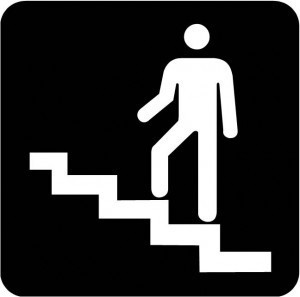 One of the challenges of my new Southern Fraud series is that I'm blending several genres: thriller, mystery, humor, drama, and just a hint of romance. I liken it more to crime dramedy TV shows than to most books I've read. Obviously, there's a market for a mix of thrills, mystery, humor, drama, and romance; it's on TV every night. But I've had a hard time finding that same balance in books.
One of the challenges of my new Southern Fraud series is that I'm blending several genres: thriller, mystery, humor, drama, and just a hint of romance. I liken it more to crime dramedy TV shows than to most books I've read. Obviously, there's a market for a mix of thrills, mystery, humor, drama, and romance; it's on TV every night. But I've had a hard time finding that same balance in books.
Janet Evanovich is mostly over-the-top humor. Kathy Reichs is all about science and mystery. I could name a dozen romantic suspense writers, but Linda Howard came to mind first. Ditto dramatic and serious thriller writers. There seems to be a lot of separation in books where there is more of a mix in TV land. I wanted to create that mix in Southern Fraud.
I think I've achieved my goal, but as a result of blending genres, I struggle with how to label (and to some extent market) the series. If I call it a thriller, people will expect pins-and-needles action all the way through with a creepy peek in the mind of the criminal. Mystery: a whodunit with no peek at the criminal. Humor: anything from dry puns to men slipping on banana peels. Drama: lots of angst on every page. Romance: red hot love scenes every fifty pages.
Even in my cover design, I had to be careful. Absolute Liability is not so action-packed that I need a cover complete with explosion. But it's not a cozy where the gun should not be featured. Nor is it totally serious. I tried to walk a fine line with a fun cover that features the gun prominently (twice! I didn't want anyone to be confused).
For clarity's sake, I'm contemplating a few changes and conducting a few experiments. I'll probably be renaming the series "Southern Fraud Novels" just so it will be a tad more generic, and readers won't be disappointed not to have a straight up thriller. I'm also playing with my Amazon subgenre lists. Absolute Liability fits well in the "Women Sleuths" category, but where else do I go? Mystery, humor, romantic suspense? I'm not sure. I've decided to try humor and see how that goes. Even though it's not a full-on laugh-riot comedy either, it does feature quirky characters doing odd things.
I do not want to misrepresent the book, but in my genre bending world, it's a challenge to find its place. My description clearly states that it's a blend of "suspense, humor, and Southern charm with just a hint of romance," but is it clear enough? Did you get what you expected?
I guess my question is "you smell where I'm stepping?"
All advice welcome.
July 21, 2011
Online Book Marketing: the Blogosphere
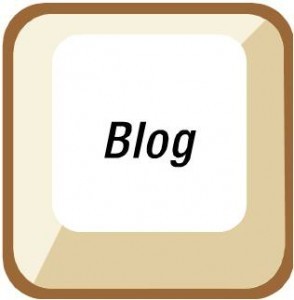
Simple, huh?
I did not want to do a blog–ever–but I was told that it was a vital part of one's online presence, so here I am yakking away and enjoying it. It is true; a blog or active website is a big part of social media marketing. It's kind of a chain: Twitter and Facebook lead readers to your blog and your blog leads them to the store. Sometimes your books lead readers to your blog, and they keep up with you while waiting for your next book.
You make friends on Twitter and Facebook, and they become interested in you and your books, so they visit your website to learn more and potentially do some shopping. What do they want to see? Well, mainly, they want to see activity, signs of life. They want to know that the site has not been abandoned and that you are actively engaged and excited about what you are doing. Basically, they want to see that you are out there. They also want to interact by leaving comments and getting responses. And I don't know about you, but if I go to a blog that hasn't been updated in a year, I assume the shop hasn't either and I don't buy at a place like that.
General
Update regularly. I'm not going to hazard a number here, but barring an emergency, I would try not to go a month without updating.
But not too often. This isn't Twitter where you have to move at lightning speed. In fact, it's just as bad to update too often as it is to neglect a blog. People do not read every blog every day, so leaving a post up for a few days will give it more mileage. If you post too quickly, readers will feel like they're behind and give up.
Blog about topics that interest you. Most people suggest having a unified blog theme. I haven't exactly attained this yet, so I can't tell you for sure that it works, but it sounds reasonable. Still, content is key. No matter how cool your site design is, if the content is lacking, you aren't going to keep readers.
Interact with commenters. Respond to people who comment.
Add shopping links or a store. Your products should be obvious but they do not necessarily have to be front and center. A blog is about content, but the links should be easily available at all times. They should send people directly to your book, not to the store where it can be searched and bought. One click only. Make it easy.
Add Google Friend Connect. People want to join your blog and have your posts in the GFC feeds when updated.
Use Google Analytics (or the like) to make sure you are effective. People don't always comment on blogs, but they do visit. To see what is really happening on your blog, you need a system that will tell you how many people came, how long they stayed, and what they read.
Monetize it by becoming an Amazon Associate, the BN equivalent, or both.
Design
When it comes to site design, everyone has their own taste and preferences, but research has shown that there are some elements and choices that improve reader experience. As with the rest of social media, a blog should be primarily about the reader. Every design element should be there to improve their experience, make it easier for them to navigate, show them what is important, and provide a good read.
I haven't got this all figured out. I admit it. In preparing this post, I researched recommendations for making blogs as reader friendly as possible. After all, we are trying to attract people and get them to read what we write. In doing so, I made a few changes here. I got rid of my welcome page and just got to the heart of the blog. I also got rid of the "verify you're a human" portion of my comments section, so you don't have to fool with that either. I also moved around some blog elements so the site looks less busy. I hope you like these changes.
Use images. Using pertinent images in your posts and in site design is recommended. Like the use of white space, images give the mind a chance to rest from words and they enhance the reading experience. Use images deliberately, meaning don't just put them in helter-skelter. Image placement should be pleasing to the eye.
But not too many. There can be too much of a good thing. Images slow down page-loading, and sometimes people browse the web with images turned off for speed purposes, and if every link on your blog is an image, it's going to cause a problem. Also, lots of people browse on their phones these days, image-heavy sites eat a lot of data. Don't make them pay for checking out your blog.
Organize images to help readers and not overwhelm them. Sometimes it's necessary to use a lot of images, especially in the bookselling biz. Look at professional websites that have to use a lot of images like Amazon, BN, or Flickr. The images are on a plain white background and they are the same size and organized in a line or grid. This makes it easy on the eye and brain.
Use a plain background for text. The background of this site is burgundy leather, but the text background is plain white. Again, look at professional sites. Most use plain white, and it's not because they're taking the easy way out. White provides a neutral setting for text. It is easier on the eyes. Make sure whatever you choose provides enough contrast to make it physically easy on your readers.
White space: use it. Science shows that eyes and the brain need "places" to rest. It's why we write in paragraphs and not one big blob. The brain needs a moment to process what it sees. If every inch of your blog is filled with something–images, colors, textures, words–there's no place to let people process.
Limit the use of ALL CAPS. Science shows that it takes longer to read a sentence in all caps than it does using sentence case.
Limit the use of different fonts and elaborate fonts. Designers generally recommend using only 2 fonts per page. Why? Again, it is easier on the human brain. Having to process a lot of fonts slows readers down. Same with elaborate fonts. Generally, if you choose to use an elaborate font, use it sparingly. The second–and main–font choice should be something simple. Serif fonts are generally preferred for print and sans serif for online reading or numeral heavy text. (I broke this rule. I like serifs. I like the way they lead they eye from left to right.)
Make navigation easy. People are savvy. They understand navigation bars, so you don't have to have duplicate links everywhere, but do make the menu obvious.
Make the search feature prominent so people can find what they want if they're having trouble.
Give each page a purpose and make it easy to find. Many bloggers mistakenly believe that you have to put everything on the main page: blog content, shopping, contributors, ads, photos, videos, slideshows, music, etc. This is not true. You have to have access to everything, but you don't have to place everything on the front page. If you try to attain every goal on one page, it's going to overwhelm people.
Don't use pop-ups, splash pages, or sign-up widgets as the first page of your blog. Just get to the content already.
Use the "continue reading" option instead of putting the full post on your main page. Your main page should provide a look at several blog topics with as little scrolling as possible, especially if you are running a multi-contributor blog. Think of it as table of contents. Bait readers with your intro and then have them click through to read the rest. This has two benefits: you'll know more specifically what people read and you'll have more exposure for your older posts.
Don't use two if one will do. The natural tendency is to repeat ourselves, to make sure the reader doesn't miss the important thing, but this often results in making a website confusing. Making it simple is better because it will be easier to find what is important. One sidebar is better than two. On nav bar is better than two. Etc.
If it moves or makes a noise, let the reader turn it on themselves or don't use it at all. This includes music, videos, and slideshows. People don't want to come to your page and have to worry that they're going to get busted at work when your music comes on or a video starts. Slideshows are nice features when the reader has control over them or when they are the main element on a page. Movement is distracting, so do not put an automatic slideshow next to anything you actually want people to read and absorb.
I think that's enough info to drive anyone nuts. When in doubt, ask yourself the following question, "Does what I'm doing make it easier on the reader?" If yes, do it. If not, don't. What makes a good blog to you?
July 20, 2011
Online Book Marketing: Twitter
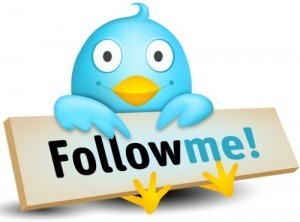
@JenniferBecton: that's me.
What the heck is Twitter?
I had no idea what it was until last year either, so don't feel bad. Twitter is the most powerful marketing and outreach tool currently in a writer's online marketing toolbox (until Google+ takes over). Think of Twitter as text messaging or emailing everyone you know at the same time in public.
This doesn't sound like a big deal, right? So I send 140 characters out there into the world? So what? The beauty of Twitter comes in its ability to expand your tweet exponentially. Taking it to the extreme, let's say I tweet my 700 followers. They all retweet (pass along) my tweet to their 700 followers. Suddenly, 490,000 people have had the chance to see my tweet. The tweet that took 30 seconds to compose has the power to market to a lot of people.
I see the power, but what do I do?
Set up a Twitter account with your name (or pen name) as the handle. Remember you want people to know who you are.
Make your avatar a picture of yourself. Twitter should be primarily about the person, not the product.
Write a good description of yourself and include the keywords that will let people know what you are about (Jane Austen, thrillers, dogs, horses). These words will help people find you in a search.
Include a link to your personal blog or webpage. Don't send them to a store. Remember, it's people, then products.
Get a personalized background. When people click on your Twitter page, that's where they should see book covers and contact info.
Ok, now what?
Make friends. Seriously, it's that simple.
Twitter is not just a place to make announcements or post links designed to draw people to your blog. It's not a radio station where you shout out to listeners. It's about interaction. You have to talk to people. Twitter is for building your fan base and finding people who are passionate about your products and about whom you are passionate in return. My rule is 75 percent friendship tweets, 25 percent marketing. Others say 60/40.
Ok, I get it, but how do I find people, and what do I talk about once I find them?
Search for people with common interests and follow them. Don't just limit it to people who might be interested in the product you sell. Search all your interests and follow people who share them because you never know who will become interested in your product as your relationship develops.
Say hi to people as they begin following you back.
Talk about your common interests.
It doesn't matter what you talk about as long as you are genuine and are yourself.
Just make friends. (I cannot overstate that.)
Again, it is vital to talk to people and not just announce things to them. Social media is about spending time with friends. As unlikely as it may sound, these friendships often offer an unbelievable amount of support and marketing power. They will also be more likely to buy your product, leave reviews, and even blog about you.
This is not a one-way street. Twitter and social media hinge on reciprocity. People become your fans and you become their fan. You do the same thing for others in return.
Tips
If you are using Twitter for marketing, don't protect your tweets. You want everyone with even a passing interest in your book to be able to find you, get to know you, and eventually interact with you.
Remember Anthony Weiner (formerly D-NY). Don't tweet a picture of your junk or anything else you wouldn't want seen on the evening news. Remember Twitter is completely public, so act like you've got some sense.
Do not get into petty squabbles on Twitter. Again, act like you've got some sense.
Also remember Charlie Sheen and don't tweet while intoxicated, angry, or otherwise impaired. #winning
Use hashtags to help find friends and promote others. As shown above with #winning, people will add hashtags to a tweet to help differentiate topics. You can search hashtags or click on them to find a whole list of people tweeting about a particular subject (#Austen, #horsechat, etc.). Also pay attention to Writer Wednesday (#WW) and Follow Friday (#FF) when you share the names writers and people others should follow. (Thanks, Anne-Mhairi!)
Just make friends.
For more information about Twitter and how to use it effectively, read Twitter Power 2.0: How to Dominate Your Market One Tweet at a Time by Joel Comm.
by Joel Comm.
July 19, 2011
Thank You for a Great Launch
 To everyone who participated in the launch of Absolute Liability by buying a copy, leaving a review, retweeting me, or even just putting up with my generally obnoxious joy this weekend, thank you.
To everyone who participated in the launch of Absolute Liability by buying a copy, leaving a review, retweeting me, or even just putting up with my generally obnoxious joy this weekend, thank you.
You all helped take Absolute Liability places I only dreamed of! At one point, for a brief shining moment, it made #430 on the Amazon Kindle Bestseller's list, which means it fell into the 99.995ish percentile. Isn't that insane? It has also stayed steady on the Women Sleuths bestseller list, and I've enjoyed those moments when it was outselling one of James Patterson's or Janet Evanovich's. Never mind that they had about a zillion other books that were outselling mine at the time!
My only disappointment is that I will be unable to give as much as I'd hoped to Ride 2 Recovery. But at the same time, ten percent of my royalties is not enough. I'm giving half, and I'll post the receipt so you can see that I fulfilled my promise.
For those of you who are curious, during my 2-week promotional period, Absolute Liability sold 602 copies. For reference, it took Charlotte Collins 3.5 months to hit that achievement.
My venture into book publishing and selling has been a lifelong dream and I am grateful to every single person who has helped it come true. Thank you.
July 18, 2011
Online Book Marketing: An Overview
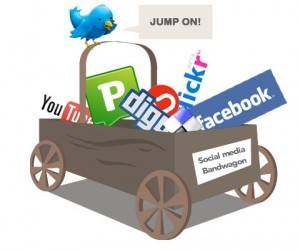
Illustration via Matt Hamm: www.matthamm.com
Face it. The world has changed. Social media marketing has become a wonderful tool for spreading the word about everything from books to yogurt. But how does one use it to the best advantage?
The first step is understanding what social media is and what it is not. Let's take each word individually as defined by Webster's:
Social: marked by or passed in pleasant companionship with friends or associates
Media: a method of cultivation, conveyance, or expression
Marketing: the process or technique of promoting, selling, and distributing a product or service
Social media marketing means spending pleasant time cultivating friends and promoting products. It's a two-part process. First, friendship; then, selling. If you do it right, you will rarely have to put your products out there. Your friends will be talking about them for you, and you, in turn, will be talking about their products.
Social media is not just for announcing upcoming releases, posting links to books, or purchasing ad space–although we'll talk about all those things–it is for building friendships with a group of people who are passionate about your books and whom you are passionate about in return.
Many people believe that time spent on Facebook, Twitter, in the blogosphere, and on message boards making and socializing with friends is a waste of time, but the truth is quite the contrary. By making friends with readers, authors are growing their potential fan base and rallying their supporters. This results not only in meeting lots of really interesting people, but in support for your endeavors. People who know you online will be more likely to read your books, leave reviews, and spread the word to their friends.
That last part is crucial: spreading the word. Social media marketing is the modern equivalent of word of mouth.
Let's say, you tweet about your new book to 5 Twitter friends. They read it and love it. Those 5 people tweet about how much they loved your book to their 5 friends. Suddenly, 25 more people have heard about your book. And it goes on from there. It's like word of mouth on speed.
In the next month or so, I'll be blogging about the ways I use social media to make friends and to share my books with them. I'll be offering specific methods and giving examples of what to do and what not to do. I'll talk about what's worked for me and what hasn't.
If you haven't done so already, go set up a Twitter account, get a Facebook author page, and resurrect that blog. It's time to learn how to use these tools to improve your sales, but more importantly, make lifelong friends.
Note: I've just been introduced to Google+ and am excited about the possibilities there. It seems to have the best features of Facebook and the marketing outreach power of Twitter. You should check that out and add me to your circles.
July 15, 2011
Buy an eBook for a Worthy Cause
Photo Via Ride 2 Recovery's Facebook page: http://www.facebook.com/pages/Ride-2-...
Buy Absolute Liability on ebook for only $0.99 from July 4-18, 2011, and help donate to Ride 2 Recovery to support wounded service members in their rehabilitation.Ride 2 Recovery is a 501c3 charity that benefits the physical and mental rehab of injured veterans. The program features cycling, an activity in which almost all patients can participate and that speeds the recovery process. More than 90 percent of each dollar donated to Ride 2 Recovery goes directly to those it serves. And let me tell you, these riders' stories are inspirational.
For more information, please visit the Ride 2 Recovery website or read this blog post by Adam Baldwin about his experience on a R2R ride. (Incidentally, I originally discovered R2R thanks to the aforementioned blog post, so Mr. Baldwin, if you're reading this, you have my thanks and a free copy of Absolute Liability, if you'd like it.)
These soldiers willingly served our country to protect our freedoms, including the freedom of any person to write anything and to share it with through the open market. I value my right to write and read freely. I'm thankful.
So for those reasons, from July 4-18, 2011, Absolute Liability will be only $0.99 on ebook and:
10 percent of all author's royalties during this time period will be donated to Ride 2 Recovery to help wounded service members.
If Absolute Liability makes the Amazon Top 100 ebook list for even 1 hour, the donation will be increased to $500.
If the book cracks the Amazon Top 20, the donation will be further increased by $500, totaling $1,000 to help our wounded warriors.
Thank you, members of the US armed forces, for your decision to serve. And thank you readers for your generosity.
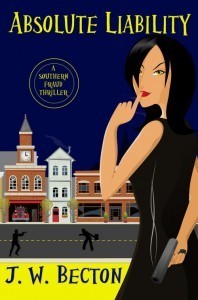 Amazon: Kindle
Amazon: Kindle
BN: Nook
Smashwords (any eBook format)
To read about members of my own family who served in the armed forces, please go here.
July 13, 2011
Jane Austen Experience: Ladies & Gentlemen Behaving Badly

Snidely Whiplash: he is evil.
Did Jane Austen write evil characters?
While working on Caroline Bingley, I've asked myself this repeatedly, and I've already opined about Caroline's nature here. In many sequels, Caroline seems to be characterized as evil, but was this what Jane Austen intended? Did she intend any of her antagonists to be villains? She didn't write ax murderers, child molesters, or dog kickers, after all. Certainly, the antagonists got in the way of our hero and heroine, but were they evil? Or were they products of Regency society and its limitations?
Caroline Bingley: She wanted Mr. Darcy for herself, and she wanted to conceal her originals in trade. She was snotty and snide, and much like the heroine Emma, she did not bother to hide her opinions of others whom she believed to be beneath her status. But was she evil? No, she was responding as polite society taught her: with gossip and condescension.
Mr. Darcy: An antagonist? Sure. He was the originator of the plan to separate Charles and Jane. He stepped between our hero and heroine, but he soon saw his error and repented. Evil? No way.
Wickham: he was a dissolute manipulator, and probably closest to a true villain in P&P. But consider the limitations placed on him. He grew up in the splendor of Pemberley almost as a son, but as an adult, his only options were to join the military, join the church, or practice law. Or he could marry well. If one were raised in luxury without a care in the world, it would be awfully tempting to take the easy way out. Still, his limitations do not excuse his lazy behavior, but they do explain it.
Mr. Frank Churchill was an antagonist in Emma. He was the crux of almost all the problems in the book, but was he evil? No, he was a lot like Wickham. He responded to the limitations placed on him by his aunt, but he did not always make wise choices.
Mr. Elliot in Persuasion was creepy, but again, not evil. As with all Regency people, he too was preoccupied with money and status, and as a lazy person, he also took the easiest course: marriage to Anne for money while conducting affairs for love. Was his decision moral? Nope. Was it evil? I'll leave that to you to decide.
Mr. Willoughby, Miss Steele…I could go on with the other antagonists, but you get the point. They weren't cartoons. They were real people with real motivations and flaws.
One of the best aspects of Jane Austen's writing was her characterization. There are no stock "bad guys" who thwarted heroes just to take pleasure in hurting them. Her antagonists were well-developed, and they had back-stories and motives of their own, and when you get right down to it, their motives greatly resembled those of all people in Regency society–the quest for money, security, and status. These characters just made poor choices about how to attain those things.
July 11, 2011
Introducing Indie Jane
Indie Jane is a new website that features independent writers of Jane Austen sequels, retellings, and variations. Their mission is to "[celebrate] and [support] independent/non-traditionally published Austenesque literature." Check out their website where you will find a chat room, message board, and links to online Austen resources. And of course, read their blogs to find out about the newest Austenesque books to hit the virtual shelves.
I'm thrilled to have been invited to participate in this group of self-published or soon-to-be self-published authors. These writers take their role as publisher seriously and want to support other like-minded writers who have chosen to forgo the restrictions of traditional publishing in search of freedom to write the books they–and hopefully you–want to read.
I will be blogging at Indie Jane once a month about indie publishing and what I've learned since I launched Charlotte Collins last year. I'm passionate both about indie publishing and about helping others achieve their dreams, and I'm honored to have the chance to share what I've learned about this niche market. And I'm looking forward to meeting new people and connecting even more with readers. (I have readers! I still can't believe it!)
Now, get thyself to Indie Jane!
July 9, 2011
Manners Maketh the Woman
I'm on Austen Authors again today with a post about Regency manners versus Southern manners.
Please pass the sweet tea.



